The 1919 Dime value ranges from $4 in good condition to $186,000 for top-grade examples with full bands. Circulated coins typically worth $4-$35, while uncirculated specimens command significantly higher prices. Key value factors include mint mark (D, S, or no mark), condition grade (MS-60 to MS-70), and the presence of full bands on the reverse. An MS-66 Full Bands example reached $186,000, while average uncirculated coins trade around $248. MS-63 grades approximately $703, MS-64 about $924, and MS-65 around $1,433. Rare errors like doubled die obverse can further increase value substantially.
That worn Mercury dime sitting in your grandmother’s jewelry box could be worth more than a tank of gas. The 1919 dime, minted in three locations during the final year of World War I, ranges from about four dollars for heavily circulated examples to a staggering $186,000 for specimens displaying full bands in pristine condition. Understanding which mint produced your coin and recognizing key quality indicators can mean the difference between pocket change and a serious payday.
Why the 1919 Mercury Dime Commands Premium Prices
The 1919 Mercury dime represents a fascinating intersection of historical significance and numismatic scarcity. Officially called the Winged Liberty Head dime, this coin was designed by Adolph Weinman and entered circulation during a transformative period in American history. The year 1919 marked the end of the Great War and the beginning of the Roaring Twenties, making these coins cultural artifacts as much as monetary instruments.
Three mints produced dimes in 1919: Philadelphia (no mint mark), Denver (D mint mark), and San Francisco (S mint mark). The Philadelphia mint struck 35,740,000 pieces, while Denver produced 9,939,000 and San Francisco contributed 8,850,000 to the total mintage. These production numbers tell only part of the story, as survival rates and strike quality dramatically affect today’s market values.
The reverse design features a fasces with horizontal bands wrapped around it, and here’s where serious collectors pay attention. Coins displaying complete, unbroken separation in these bands—designated as “Full Bands” or FB—represent less than 5% of surviving high-grade examples. This rarity factor transforms an otherwise common coin into a five-figure treasure.
Breaking Down Value by Mint Mark
Philadelphia Issue: No Mint Mark
The 1919 Philadelphia dime carries no mint mark and represents the highest mintage of the three varieties. Circulated examples in Good condition trade for approximately $3 to $4, reflecting their silver content and basic collectibility. As condition improves to Very Good or Fine, prices climb to the $18 to $25 range.
Uncirculated specimens command substantially more. A typical Mint State example without Full Bands designation sells for around $85 to $150. Once you enter certified grades, the progression looks like this:
| Grade | Approximate Value |
|---|---|
| MS-63 | $165 |
| MS-64 | $285 |
| MS-65 | $625 |
| MS-66 | $1,450 |
| MS-67 | $4,800 |
Add the Full Bands designation, and these numbers multiply considerably. An MS-65 FB can reach $2,200, while MS-66 FB examples have sold for $8,500 to $12,000 at major auctions. The population of certified Full Bands coins remains remarkably low—PCGS has graded fewer than 100 examples in MS-66 FB or better across all three mint marks combined.
Denver Mint: The D Mint Mark Prize
The 1919-D represents the key date among this year’s issues, particularly in high grades with Full Bands. With nearly 10 million struck, you might expect availability, but decades of circulation and melting during various silver price spikes have drastically reduced the surviving population.
Worn examples begin around $4 in Good condition, rising to $20 in Very Good, $27 in Fine, and approximately $35 in Extremely Fine. These prices reflect steady collector demand even for heavily circulated pieces.
The uncirculated market tells a different story entirely. Average Mint State examples—those without Full Bands—trade for around $248. Certified grades escalate rapidly:
| Grade | Standard Strike | Full Bands |
|---|---|---|
| MS-63 | $703 | $3,850 |
| MS-64 | $924 | $8,200 |
| MS-65 | $1,433 | $18,500 |
| MS-66 | $5,400 | $186,000 |
That $186,000 figure comes from actual auction results. In January 2019, Heritage Auctions sold a PCGS MS-66 FB example for precisely this amount, establishing a record for the variety. Only three specimens have been certified at this level, making it rarer than many classic rarities that receive far more publicity.
According to PCGS expert Ron Guth, “A 1919-D Mercury dime with Full Bands in Mint State-66 or better is a legitimate rarity that rarely appears on the market.” When one does surface, serious collectors compete aggressively, driving prices to levels that would have seemed unimaginable two decades ago.
San Francisco Production: The S Mint Mark
The 1919-S falls between Philadelphia and Denver in terms of both mintage and value. With 8,850,000 struck, it represents the lowest production total for the year, though this doesn’t automatically translate to higher prices across all grades.
Circulated examples match the Philadelphia pricing structure closely: approximately $4 in Good, $20 in Very Good, $27 in Fine, and $36 in Extremely Fine. The silver content provides a price floor that prevents these coins from dropping below melt value regardless of condition.
Uncirculated specimens without Full Bands typically sell for $175 to $280, depending on eye appeal and specific grade. Certified examples show this value progression:
| Grade | Value Range |
|---|---|
| MS-63 | $385 – $450 |
| MS-64 | $625 – $750 |
| MS-65 | $1,100 – $1,350 |
| MS-66 | $3,200 – $4,500 |
Full Bands examples multiply these figures by factors of three to five. An MS-65 FB can reach $4,200, while MS-66 FB specimens have sold for $28,000 to $35,000. The survival rate for Full Bands San Francisco dimes remains extremely low, with PCGS reporting fewer than 60 certified examples across all Mint State grades.
Identifying Full Bands: The Details That Matter
The Full Bands designation requires complete separation of the horizontal bands across the fasces on the reverse. Specifically, graders look for three distinct bands with sharp, unbroken lines showing clear spacing between them. The central band proves most critical, as weak strikes typically flatten this area first.
Examining a potential Full Bands coin requires good lighting and preferably 5x to 10x magnification. Look at the fasces directly below the olive branch. You should see three parallel horizontal lines with clear spaces between them running from the left edge of the fasces to the right. Any merging, weakness, or incompleteness disqualifies the coin from FB status.
Strike weakness affects Mercury dimes more than many other series because the design includes fine details in both high and low relief. Even well-preserved coins from original rolls often show softness in the bands due to die wear, striking pressure variations, or planchet issues. This explains why Full Bands examples represent such a small percentage of surviving Mint State coins.
Professional grading through PCGS or NGC provides the only reliable authentication of Full Bands status. Raw coins claiming FB often disappoint upon professional review. The grading fee—typically $40 to $65 for modern service levels—pays for itself many times over if your coin genuinely qualifies for the designation.
Error Varieties Worth Checking
Beyond standard strikes, several error varieties command premiums among specialists. The most significant is the Doubled Die Obverse, showing doubling in the lettering around the rim. This variety appears primarily on Philadelphia strikes and can add $500 to $3,000 to a coin’s value depending on the strength of doubling and overall condition.
Repunched mint marks occasionally appear on Denver and San Francisco coins, where the mint mark was stamped multiple times in slightly different positions. Strong examples with clearly visible doubling sell for $150 to $600 premiums over standard specimens in comparable grades.
Off-center strikes exist for all three mints, with value depending on the percentage off-center and whether the date remains visible. A 10% off-center strike with full date typically brings $200 to $400, while more dramatic errors can reach four figures if the quality remains high.
Clipped planchets—coins struck on blanks that were improperly punched from the metal strip—show missing segments around the rim. Straight clips sell for $75 to $200, while curved clips indicating the beginning or end of a metal strip can bring $150 to $350.
Smart Strategies for Buying and Selling
When purchasing 1919 dimes, certification matters tremendously for anything above Extremely Fine condition. Raw Mint State coins frequently grade lower than seller descriptions suggest, and Full Bands claims prove unreliable without third-party verification. Budget an additional 15% to 20% for certified coins versus raw examples, accepting this as insurance against disappointment.
For circulated coins where certification costs exceed the coin’s value, focus on honest wear and original surfaces. Cleaned coins—those that have been chemically or mechanically treated—sell for 30% to 60% below the prices listed here. Look for natural gray or golden toning rather than bright, abraded surfaces that suggest cleaning.
If you’re selling, timing affects results significantly. Heritage Auctions, Stack’s Bowers, and Legend Rare Coin Auctions conduct major sales quarterly where rare date Mercury dimes attract serious bidding. A 1919-D in MS-65 FB might bring $17,000 through a major auction but only $12,000 through a quick local dealer sale. The difference covers auction fees several times over.
Consider grading submissions carefully. Coins that clearly fall into the MS-64 to MS-66 range with potential Full Bands designation justify grading fees. Borderline Mint State coins or those obviously lacking full band separation rarely return value sufficient to cover submission costs. Many dealers offer pre-screening services for $10 to $20 per coin, helping you avoid expensive mistakes.
Building Your Collection Around 1919 Dimes
Collectors approach these coins from multiple angles. Date and mint mark collectors need one example of each variety, typically seeking mid-grade specimens in the Fine to About Uncirculated range. This strategy provides affordable entry while maintaining numismatic significance. A complete three-piece set in Very Fine costs approximately $60 to $75.
Quality-focused collectors might acquire a single example representing the finest they can afford, perhaps an MS-65 Philadelphia issue at $625 or an MS-64 Denver piece at $924. This approach emphasizes condition over completeness, building a smaller collection of higher-quality material.
Full Bands specialists pursue only FB-designated coins, accepting that completing all three mints in high grades requires substantial investment and patience. This narrow focus has gained popularity as collectors recognize the rarity and investment potential of properly struck examples.
Registry set participants compete through PCGS or NGC set registries, where points are awarded based on grades. This competitive collecting drives strong demand for top-population coins, sometimes pushing prices above typical market levels when key registry collectors compete for the same scarce upgrade.
Where These Coins Stand in Today’s Market
The market for 1919 Mercury dimes has strengthened considerably over the past decade, driven by several factors. First, the certified population has stabilized, with fewer raw examples entering the grading population as attics and estates yield fewer discoveries. Second, the Full Bands designation has gained widespread recognition, creating clearer value separation between standard strikes and properly executed pieces.
Third-party grading has brought transparency to a market once plagued by overgrading and questionable attributions. You can now verify population reports instantly through PCGS CoinFacts or NGC Census, understanding exactly how many examples exist at each grade level. This information empowers collectors to make informed decisions rather than relying solely on dealer representations.
Price guides like Greysheet, published weekly, track actual transaction prices across wholesale networks. These numbers—rather than optimistic retail listings—provide realistic valuations. For 1919 dimes, Greysheet data shows steady appreciation of 3% to 7% annually for certified Mint State coins over the past five years, outpacing inflation and rivaling many traditional investments.
Your Next Move With That 1919 Dime
Start by determining your coin’s mint mark. Look on the reverse, to the left of the fasces base near the rim. You’ll see either a D, S, or no mark at all. Use a jeweler’s loupe or smartphone macro lens to check the bands—count three distinct horizontal lines with clear separation. If you see potential Full Bands quality and the coin appears uncirculated, professional grading becomes worth serious consideration.
For circulated examples, compare your coin against high-resolution images from PCGS CoinFacts or similar references. Match the amount of wear against established grade descriptions to estimate your position in the Good through Extremely Fine range. Even worn 1919-D examples justify $20 to $35 if honestly graded, making them worth more than face value by significant margins.
Submit questionable high-grade candidates to PCGS or NGC through an authorized dealer or direct membership. The investment of $50 to $75 in grading fees protects against selling a $5,000 coin for $500 due to uncertainty about its true quality. Major coin shows occur monthly in most metropolitan areas, providing opportunities to have dealers preview your coins before committing to grading fees.
You may be interested:
- 1859 Indian Head Penny Coin Value Complete Errors List And No Mint Mark Worth Guide For Collectors
- 1911 V Nickel Coin Value Guide Complete Errors List And No Mint Mark Worth Today
- 1902 Dime Coin Value Complete Errors List With O S And No Mint Mark Worth Guide
- 1788 Quarter Coin Value Complete Guide Errors List And D S P Mint Mark Worth Revealed
- 1776 To 1976 Bicentennial Half Dollar Coin Value Complete Errors List And What Your D S And No Mint Mark Coins Are Actually Worth
- 1990 Penny Coin Value Errors List How D S And No Mint Mark Pennies Are Worth Thousands Of Dollars

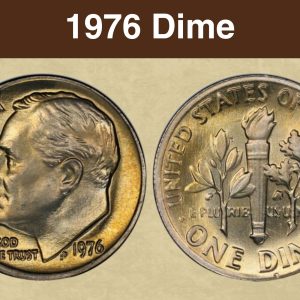
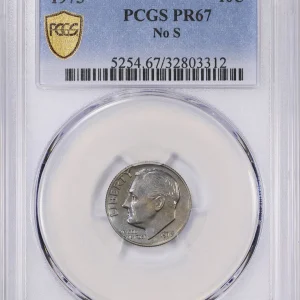
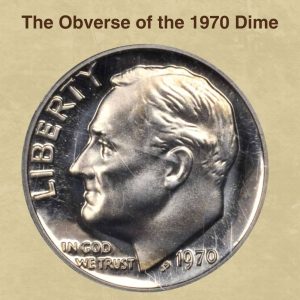
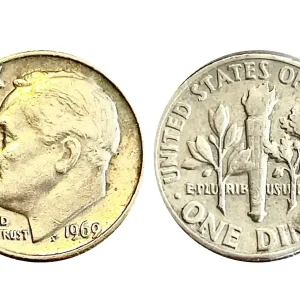
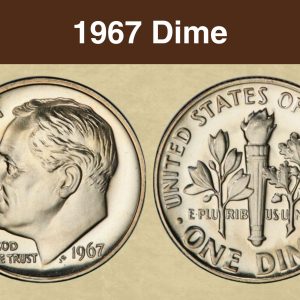
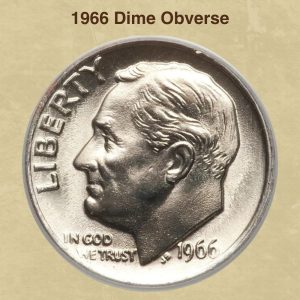
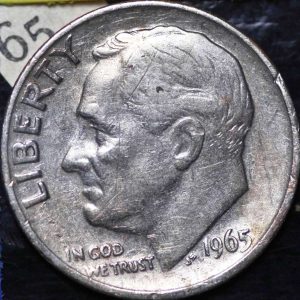
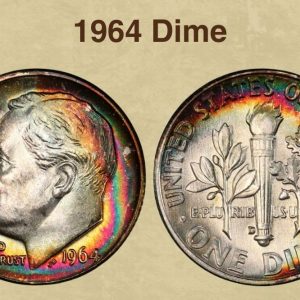
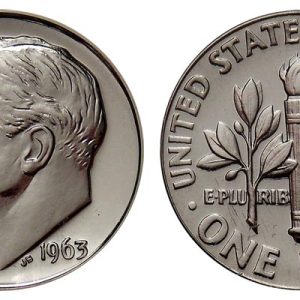
How much is a 1919 D Mercury dime worth?
A 1919-D Mercury dime’s value ranges from approximately $4 in good condition to over $186,000 for a top-grade example with full bands. Its value depends heavily on its condition, with circulated coins worth around $4 to $30, and uncirculated coins with a strong “full bands” strike commanding much higher prices, according to data from Greysheet, APMEX, and PCGS.
What is the most wanted Mercury dime?
The most sought-after Mercury dimes are the 1916-D, the 1921, the 1921-D, and the 1942/1 overdate varieties. Other key dates include the 1926-S, 1919-D, and 1945. Value depends heavily on a coin’s condition, with higher-grade coins commanding significantly higher prices.
Where is the mint mark on a 1919 Mercury dime?
The reverse of the dime shows a fasces, a Roman symbol representing the power of law and government. It is surrounded by an olive branch, symbolizing peace. The mint mark in located on the reverse, while the artist’s initials can be found on the obverse.
What year is the $2000000 dime?
1894-S Barber dime. The 1894-S Barber dime is a dime produced in the United States Barber coinage. It is one of the rarest and most highly prized United States coins for collectors, along with the 1804 dollar and the 1913 Liberty Head nickel.